- JST Home
- /
- Strategic Basic Research Programs
- /
 PRESTO
PRESTO- /
- project/
- Cell Control/
- [yuCell] Year Started : 2024
[yuCell] Year Started : 2024
Tomoyoshi Inoue
Optical technologies for controlling deep brain region in mouse
Grant No.:JPMJPR24O1
Researcher
Tomoyoshi Inoue
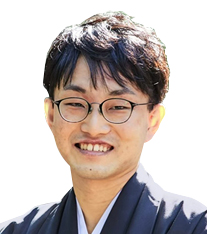
PRESTO Individual Researcher, Japan Science and Technology Agency
Outline
Many biological functions arise from the temporal patterns and interactions of cells and molecules deep within the body. However, existing technologies struggle to measure these deep cellular functions and verify them through optical manipulation at single-cell resolution. In this project, I aim to develop an fiberoptic-based in vivo single-cell resolution optogenetics technologies using advanced deep measurement and manipulation methods. By using the proposed technologies, I will verify the concept of temporal information coding by reconstructing sequence neural activity in deep regions of the brain.
Naoko Irie
Metabolic Manipulation: Harnessing Metabolic Switch Mechanisms in Early Human Embryos
Grant No.:JPMJPR24O2
Researcher
Naoko Irie

Professor
School of Medicine
Keio University
Outline
Embryo implantation into the maternal uterus is a crucial event for a successful pregnancy in human. The metabolic mode of the embryo dynamically shifts from oxidative phosphorylation to glycolysis during implantation. This study employs a human pluripotent stem cell model of implantation-stage embryos to investigate the molecular mechanisms regulating the metabolic switch between oxidative phosphorylation and glycolysis, as well as the associated metabolite dynamics. By utilizing the mechanisms, I aim to develop robust technologies for the evaluation and manipulation of the cellular metabolic states. This research will elucidate the role of metabolic changes in early human embryonic development and contribute to broader scientific and medical fields related to metabolic dynamics.
Hiroaki Ohishi
Transcriptional manipulation through spatial crosstalk between epigenomes
Grant No.:JPMJPR24O3
Researcher
Hiroaki Ohishi
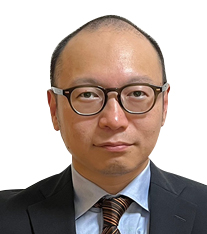
Assistant Professor
Medical Institute of Bioregulation
Kyushu University
Outline
Gene expression levels are regulated by not only the binding of transcription factors to transcriptional regulatory regions but also by epigenetic elements, including DNA methylation, histone modifications, and higher-order genomic structures. The combinations of epigenetic elements involved are vast. To analyze these effectively, I will integrate spatial omics technology using fluorescence imaging with a unique live-cell analysis technique. Based on these foundational techniques, I aim to develop a robust method for transcriptional manipulation through spatial crosstalk between epigenomes.
Takeshi Onuma
House construction with animal fibers on epidermal cells
Grant No.:JPMJPR24O4
Researcher
Takeshi Onuma
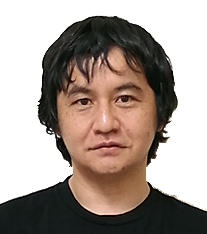
Associate Professor
Graduate School of Science and Engineering
Kagoshima University
Outline
The larvaceran, Oikopleura dioica, is a planktonic chordate and living in the house, a cellulose-containing architecture. House is a complicated three-dimensional (3D) filtration apparatus to concentrate food particles from seawater. House is secreted from the trunk epidermis, oikoplastic epidermis, as a compressed and folded house rudiment (HR). Animals discard houses approximately five to eight times a day, followed by an expansion of HR to form a new house. The house construction is expected to provide insights into 3D morphogenesis and development of biologically inspired functional products. In this project, I will try to clarify the process of designing house using cellulose fibers on epidermal cells, and elucidate new cellular functions underlying “construction of 3D structures by manipulating animal fibers”.
Naoyoshi Kumakura
Playing with appressoria: Development of turgor pressure and adhesion control, among the highest generated by cells
Grant No.:JPMJPR24O5
Researcher
Naoyoshi Kumakura

Senior Research Scientist
Center for Sustainable Resource Science
RIKEN
Outline
Some plant fungal pathogens, such as anthracnose and rice blast fungi, utilize the exceptionally high turgor pressure generated by a specialized infection cell called the appressorium to penetrate the tough surface of plant cells, establishing infection. This powerful penetrating force is composed of two physical forces: turgor pressure and adhesion. In this project, I aim to elucidate the molecular mechanisms underlying the generation of turgor pressure and adhesion using my proprietary genome editing and appressorium analysis techniques, and further establish methods to control these forces based on the gained insights.
Masahiro Kumeta
Cell manipulation by an audible range of acoustic stimulation
Grant No.:JPMJPR24O6
Researcher
Masahiro Kumeta
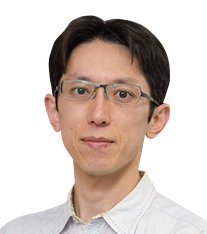
Assistant Professor
Graduate School of Biostudies
Kyoto University
Outline
Effect of an audible range of acoustic stimulation at cellular level has not been systematically investigated. By utilizing a unique cell acoustic system, this project aims to uncover cell level responses against acoustic stimulations together with their underlying mechanisms to output different responses against different patterns of acoustic stimulation. Also, innovative cell manipulation techniques will be invented to control gene activity and cell differentiation by acoustic stimulation.
Keiichi Kojima
Creation of Opto-GPCRome
Grant No.:JPMJPR24O7
Researcher
Keiichi Kojima
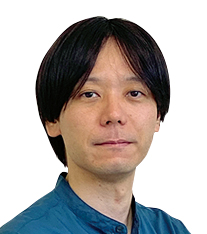
Lecturer
Faculty of Medicine, Dentistry and Pharmaceutical Sciences
Okayama University
Outline
G protein-coupled receptors (GPCRs) are master regulators of cell signaling by transducing extracellular stimulus signals into the cell and are involved in many biological processes and diseases. This project aims to develop a platform to optically control a wide variety of GPCR signaling cascades to elucidate the relationship between GPCR signaling and physiological functions.
Takahiro Kosugi
Development of cell manipulation technology by restoring and extending lost protein functions
Grant No.:JPMJPR24O8
Researcher
Takahiro Kosugi
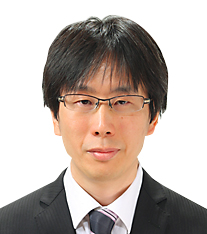
Assistant Professor
Institute for Molecular Science
National Institutes of Natural Sciences
Outline
Proteins have evolved over a long period of time, acquiring diverse functions that enable the regulation of complex biological systems. On the other hand, there are many proteins that lost their originally acquired enzymatic functions during the evolution. The functions of these proteins, termed “pseudoenzymes”, remain largely unexplored. In this study, I aim to develop novel methods for cellular manipulation by finding and modifying unknown pseudoenzymes through the use of protein structure prediction and design technologies.
Makoto Saito
Investigation of OMEGA-associated systems for the development of molecular tools
Grant No.:JPMJPR24O9
Researcher
Makoto Saito
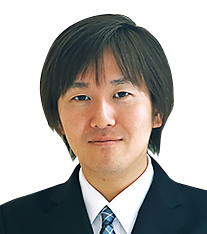
RIKEN ECL Team Leader
Pioneering Research Institute
RIKEN
Outline
OMEGA systems, the ancestors (IscB, IsrB, and TnpB) and a relative (Fanzor) of CRISPR–Cas9 and Cas12, encompass RNA-guided DNA endonucleases that are enslaved by transposons. Some OMEGA systems have lost their DNA cleavage activity by escaping from this subjugation, ironically becoming enslaved once again by host microorganisms to bestow RNA-guided functions in the physiological processes of the hosts. Here, I aim to systematically identify such “OMEGA-associated” systems and investigate their functions using techniques from molecular biology and biochemistry, with the goal of taming them as molecular tools with novel RNA-guided modalities for human beings.
Keiichiro Shiraga
Cell control through visualization of water: Manipulating intracellular water
Grant No.:JPMJPR24OA
Researcher
Keiichiro Shiraga
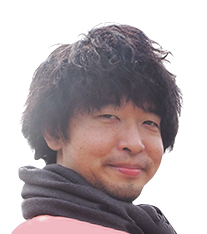
Assistant Professor
Graduate School of Agriculture
Kyoto University
Outline
Although water accounts for the majority of cell weight, the identity of water in living cells is a mystery. In this project, I aim to clarify the cellular mechanisms involving liquid water by developing an original microscope that can visualize the dynamics of water molecules. At the same time, I will also explore techniques for actively manipulating water dynamics and pursue the possibility of achieving innovative cell control by manipulating water dynamics in cells.
Masaharu Somiya
Construction of designer cells by synthetic membrane fusion machinery
Grant No.:JPMJPR24OB
Researcher
Masaharu Somiya
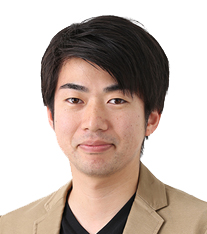
Associate Professor
SANKEN
The University of Osaka
Outline
Cells use membranes to compartmentalize their interiors, with membrane fusion between organelles playing a crucial role in regulating various cellular processes. Our previous research successfully designed synthetic membrane fusion proteins in silico, capable of inducing membrane fusion in response to external stimuli. Building on this technology, this project aims to develop designer cells that can generate unique functions through organelle membrane fusion. Given that cell membranes are a universal structure across all living organisms, this research is expected to establish a foundational platform for creating designer cells in a wide range of species, including animals, plants, and microorganisms.
Yuhei Chadani
Manipulating genetic information hidden within the amino acid sequences.
Grant No.:JPMJPR24OC
Researcher
Yuhei Chadani
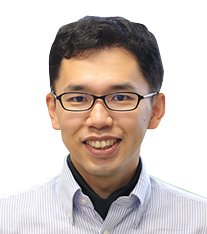
Associate Professor
Faculty of Environmental, Life, Natural Science and Technology
Okayama university
Outline
I will try to develop a unique genetic engineering technology that can manipulate the genetic information hidden within the amino acid sequences of proteins, rather than DNA. Through the artificial evolution experiments, I aim to generate the customized translation factors that specifically alleviate or regulate various “hard-to-translate” amino acid sequences. This breakthrough will allow for precise regulation of gene function and enhanced protein production efficiency, ultimately addressing important societal challenges.
Hideki Nakamura
Developing synthetic cytoskeletons for arbitrary manipulation of cellular movements
Grant No.:JPMJPR24OD
Researcher
Hideki Nakamura

Program-Specific Associate Professor
The HAKUBI Center for Advanced Research
Kyoto University
Outline
In this research, I aim to develop synthetic cytoskeletons that operate within living cells. These synthetic cytoskeletons will have their polymerization and depolymerization processes precisely controlled by external stimuli. Specifically, I will focus on creating synthetic microtubules that facilitate long-range transport in conjunction with synthetic molecular motors. Additionally, I will develop synthetic actin capable of spatial and temporal regulation, generating physical force upon polymerization. By engineering candidate proteins tailored for these functions, I intend to manipulate cellular movement within living organisms.
Takeshi Higa
Development of opto-manipulation techniques for localization of organelles or membrane proteins
Grant No.:JPMJPR24OE
Researcher
Takeshi Higa
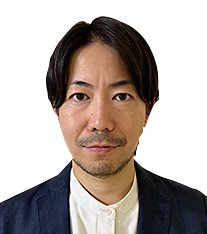
Assistant Professor
Graduate School of Arts and Sciences
The University of Tokyo
Outline
The chloroplast, a plant-specific organelle responsible for photosynthesis, can move toward weak light to optimize photosynthesis and move away from strong light to prevent photodamage. This project focuses on this “chloroplast photorelocation movement.” The key regulators, phototropins and CHUP1, change their localization in response to light stimuli. One of the aims of this project is to elucidate the mechanism behind these light-induced changes in protein localization. Furthermore, using the knowledge gained, this project aims to develop techniques to manipulate the localization of various organelles using light, not limited to chloroplasts, as well as techniques to manipulate the localization of membrane proteins using light.
Masahiro Fukuda
A challenge for light-controllable membrane transport
Grant No.:JPMJPR24OF
Researcher
Masahiro Fukuda

Assistant Professor
Research Center for Advanced Science and Technology (RCAST)
The University of Tokyo
Outline
Optogenetics is a technology to manipulate specific cellular functions with light, which started with the discovery of light-driven ion channels about 20 years ago. In recent years, optogenetics has been applied not only to basic biological fields such as neuroscience but also to the treatment of human diseases, making it one of the fundamental technologies supporting modern biology. The purpose of this research is to develop a new optogenetics field started from a newly discovered photoreceptor proteins.
Natsuko Miura
Development of tools for manipulation of cell metabolism via control of enzyme condensates
Grant No.:JPMJPR24OG
Researcher
Natsuko Miura

Associate Professor
Graduate School of Agriculture
Osaka Metropolitan University
Outline
Protein condensates formed in the cytoplasm by a group of glycolytic enzymes under hypoxic conditions have been studied in budding yeast and implicated in several diseases. On the other hand, the biological significance of these enzyme condensates remains largely unexplored because there is no method to directly control the formation and disassembly of metabolic enzyme condensates in the cell. In this study, I aim to elucidate the functions of glycolytic enzyme condensates in cells, tissues, and individuals by constructing tools that allow precise and flexible control of their assembly in different species.













